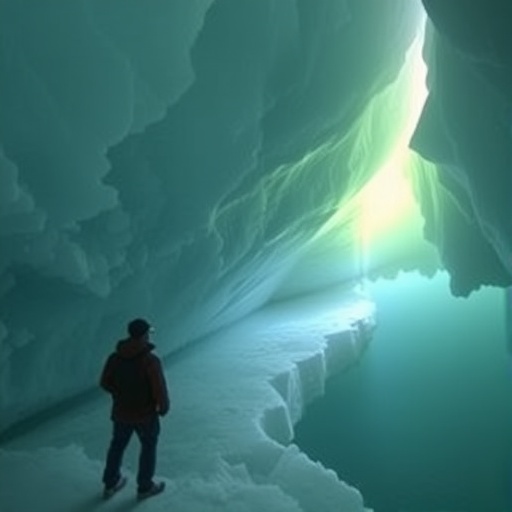For decades, the Earth’s climate history has been meticulously chronicled through the study of ice cores extracted from the vast Antarctic ice sheet. These cores serve as frozen time capsules, preserving embedded chemicals and microscopic air bubbles that deliver invaluable insights into atmospheric composition and climate conditions spanning hundreds of millennia. Decoding this paleoclimate archive enhances our understanding of climate variability and its driving forces over geological timescales, informing projections of future climate change.
A fundamental challenge in these investigations lies in acquiring ice that is both continuous and chronologically intact. For scientists to reconstruct a precise and uninterrupted timeline, the ice must remain undisturbed — with its youngest layers near the surface and oldest layers at the deepest depths. Until recently, the oldest such ice cores managed to reach back approximately 800,000 years, a critical threshold marking the onset of pronounced ice age cycles. Yet, this temporal limit leaves many compelling questions about earlier climate epochs unresolved, fueling urgency to locate and extract even older ice.
This quest to push the boundaries of Earth’s climatic record catalyzed the formation of the Center for Oldest Ice Exploration (NSF COLDEX), a National Science Foundation–funded multidisciplinary collaboration aimed at locating the oldest continuous polar ice archives yet. Headquartered at Oregon State University, the center integrates expertise in glaciology, geophysics, geology, and climate science, leveraging advanced technologies to probe Antarctica’s frozen interior in unprecedented detail.
In 2021, Duncan Young, a research associate professor at the University of Texas at Austin’s Institute for Geophysics, joined forces with NSF COLDEX. Over a concentrated two-year campaign, Young and a dedicated University of Texas research team utilized airborne radar systems aboard a specially modified DC-3 aircraft to survey a previously unexplored sector of East Antarctica’s deep interior near the South Pole. Deploying sophisticated radar tomography, their objective was to image internal ice stratigraphy and subsurface bedrock structures to identify promising regions for ancient ice preservation.
While their airborne survey did not uncover continuous ice older than current limits, it yielded transformative insights into the dynamic interactions between ice sheet structure and the geology concealed beneath Antarctica’s kilometers-thick ice layers. The team detected a deep basal ice layer, termed the basal unit, residing within an expansive depression called the South Pole Basin. Strikingly, they inferred that this basal ice unit migrated downward over tens of millions of years, grinding along a subglacial mountain range and accumulating fine sediment particles in the basin—a process markedly distinct from typical terrestrial sediment transport shaped by rivers or conventional glacier dynamics.
Young explains that this “novel kind of subglacial sedimentary basin” forms gradually over an extended timeframe of 14 to 30 million years, as incremental sediment deposits build up without the conventional sculpting influences found on Earth’s surface. This discovery challenges prevailing assumptions about Antarctic basal environments and compels a re-examination of how subglacial geology can influence ice sheet behavior and sedimentation patterns on geologic timescales.
Moreover, the sediment-enriched substrate in the basin correlates with localized geothermal hotspots—regions where elevated heat flow triggers basal ice melting. This basal melting intensifies the lubrication between the ice sheet and bedrock, modulating how ice flows across the continent and fostering the formation of subglacial lakes that may impact ice sheet stability. Characterizing these heat flow anomalies and temperature gradients at the ice-bed interface is therefore pivotal to predicting where the oldest ice layers might be stably preserved, shielded from melting and deformation.
According to Young, while the central South Pole Basin itself may not offer ideal conditions for retrieving ancient continuous ice due to ongoing basal melting, the upstream basal unit areas could act as protective reservoirs, preserving older ice beneath comparatively stable thermal regimes. These findings have directed NSF COLDEX’s subsequent airborne campaigns to refine their search and prioritize these structurally distinct basal landscapes.
Beyond the South Pole, the consortium plans to expand their reconnaissance missions to additional targeted sites such as the Allan Hills region, where discontinuous ice fragments have aged beyond five million years. There are also plans to integrate findings with ongoing European ice core projects at Little Dome C, a prominent drilling site aiming to break the 800,000-year record and extend paleoclimate archives ever further into the past. This collaborative and integrated approach embodies the forefront of international efforts to unlock the secrets held within Earth’s oldest ice.
The pioneering research published in Geophysical Research Letters elucidates the coupling between East Antarctica’s ice sheet architecture and its underlying bedrock geology—an interplay crucial for refining ice core site selection. Such advances in geophysical mapping and ice sheet modeling enhance not only our paleoclimate reach but also our understanding of ice dynamics in the context of climate change, with profound implications for projections of sea level rise and global environmental stability.
Funding for this groundbreaking work was provided by the U.S. National Science Foundation and the G. Unger Vetlesen Foundation, supporting a synergy of geoscientific exploration and innovation. As technological capabilities progress, these investigations hold promise to reveal hitherto inaccessible chapters of Earth’s climatic saga etched in ice, illuminating the intricate history of our planet’s environmental evolution and future trajectory.
Subject of Research: Paleoclimate Reconstruction Through Antarctic Ice Core Analysis
Article Title: Coupled Ice Sheet Structure and Bedrock Geology in the Deep Interior of East Antarctica: Results From Dome A and the South Pole Basin
News Publication Date: 3-Oct-2025
Web References: https://agupubs.onlinelibrary.wiley.com/doi/10.1029/2025GL115729
Image Credits: University of Texas Institute for Geophysics
Keywords: Geology, Glaciology, Ice Sheets, Glaciers, Climatology, Earth Systems Science, Antarctica




